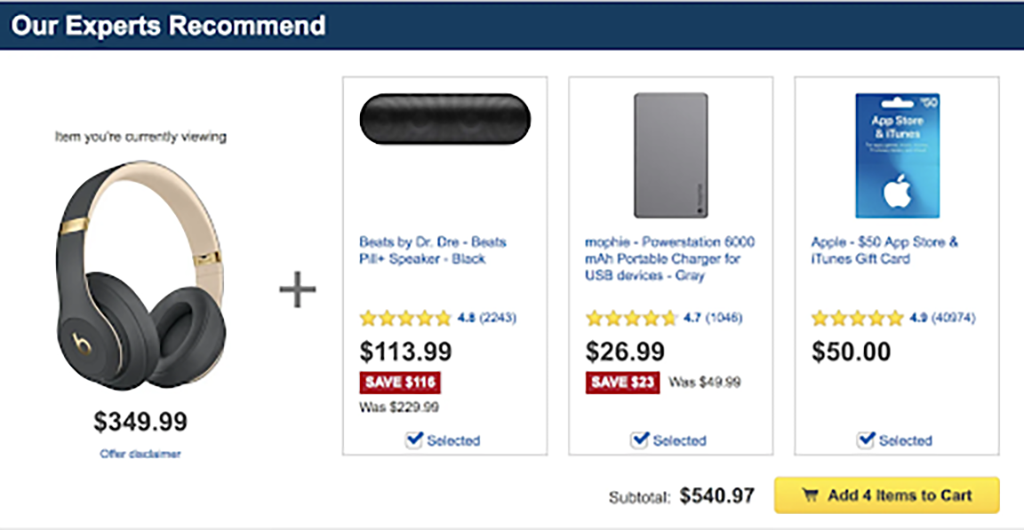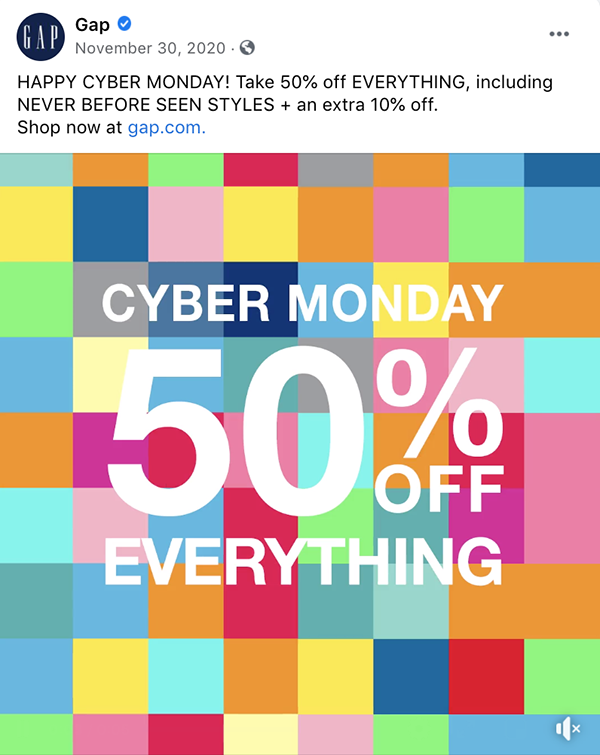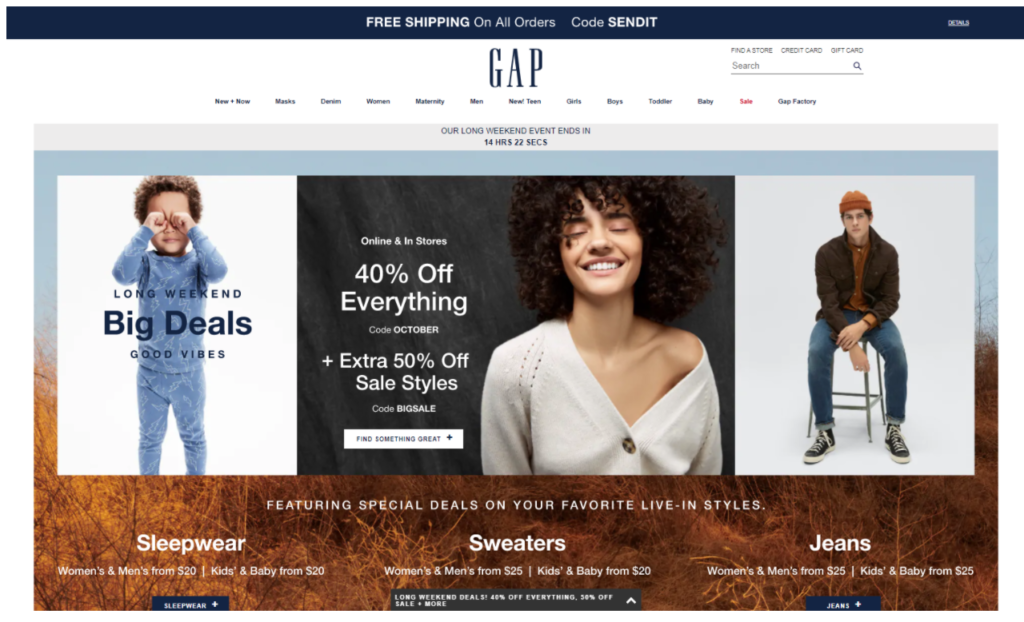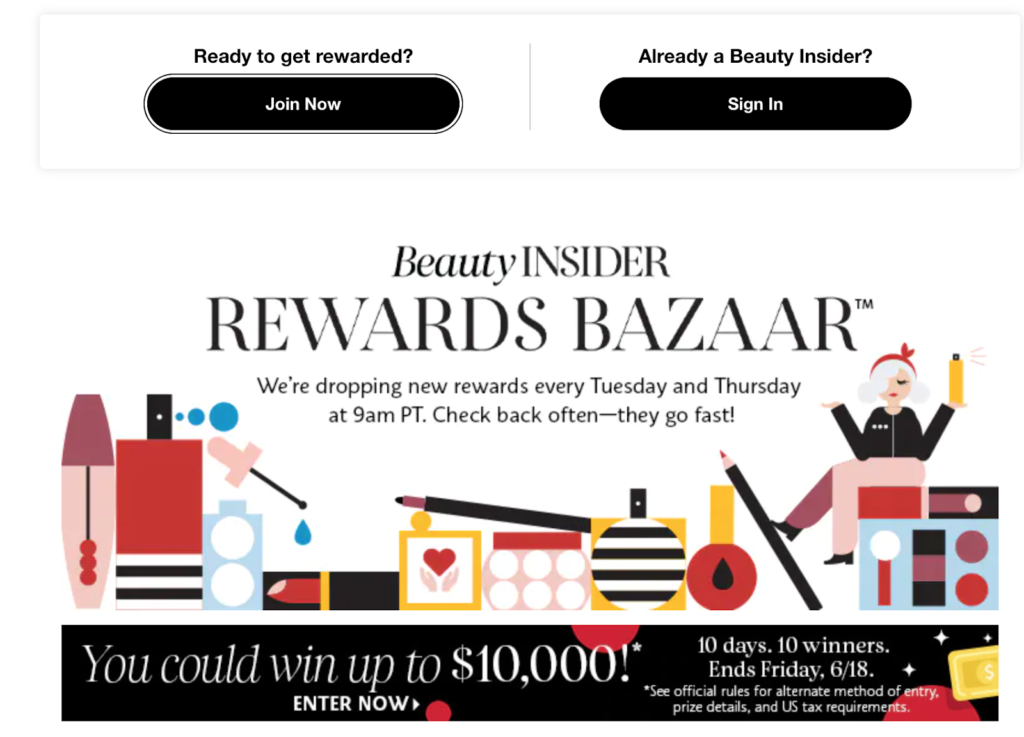Updated July 5, 2022
Amazon Prime Day 2022 is only a few days away! This year, Amazon Prime Day will take place on July 12-13, making now the perfect time for those last minute adjustments to your Amazon Prime Day marketing and getting ideas and inspiration for campaigns that will help you make this one of your best sales days ever.
The investment is expected to be worth it. Retailers seem to be optimistic this year about Prime Day sales rising compared to previous years. Many of them are investing in promotions, deals, discounts and flash sales to gain shoppers’ attention, as well as slashing prices so they can compete with Amazon’s offerings.
Let’s look at 5 strategies that can help you boost your sales alongside some Amazon Prime Day statistics that back them up.
Who are The Shoppers?
The average US shopper is planning to spend $388 this year at retailers that are not Amazon. According to RetailMeNot, this will span across a number of categories:
- Clothing, shoes and apparel (35%)
- Kitchen appliances (15%)
- Home decor (19%)
- Cleaning supplies (17%)
- At-home fitness equipment (8%)
- Video games (14%)
- Headphone (17%)
- Smart watches (9%)
- Laptops or computers (17%)
With the current state of the economy being the looming recession and 8% inflation rates, there is important information to consider in order to make the most out of July 12-13. The financial hit Americans have taken over the past few years potentially makes Prime Day deals even more enticing to a consumer.
According to a survey conducted by JungleScout, 53% of consumers are compelled to purchase a product with a promotion while the other 47% intend on only purchasing products that are on sale or discounted. Since consumers are spending less, it is safe to say that they will be eyeing big savings– but discounts are not the only strategy that can be used to catch their eye.
Strategy #1: Optimize Your Brand Presence & Product Listings
High quality content and design are key for attracting shoppers and keeping them engaged and immersed in the shopping experience. Make sure your brand and product portfolio have a nice, fresh and clean design that depicts your branding and messaging. Use crisp and high quality images, add titles, bullet points, and descriptions in a concise form. Add a section for more detailed descriptions, customer reviews and customer FAQs. You can also add content and designs that depict values your shoppers have, like sustainability and community.
Think about the overall user experience. Add clear navigation bars, pop-up assistants and buttons. These will help the shopper navigate more easily, which translates into higher conversions and return rates. Then, optimize the design for many types of screens, and especially for mobile. Many shoppers browse and consume on the fly, and not while sitting at home.
While optimizing, make sure your product listings are up-to-date and that you have all the inventory required to support sales demand. Prime Day is in high-demand, so validate that you can handle it.
Pro tip: Bundle up product offerings to increase sales, and especially with less popular products that can help you manage inventory. Since Amazon moved Prime Day up to June, now is also a good time to bundle up with back-to-school offerings, which tend to peak around July.
 Product bundling – Best Buy
Product bundling – Best Buy
Strategy #2: Promote Across Multiple Channels
Although the awareness around Prime Day deals is high, the competition remains fierce. With so many brands trying to steal shopper’s attention, it’s difficult to create a unique angle. So how do you grab your customers’ attention? Brands that implement complementing channels will gain a significant advantage over competitors.
The first step is to prepare your ad strategy. You will need to infuse money into an effective ad strategy in order to have shoppers viewing your product listings. Prepare your PPC budget accordingly, but don’t spend blindly – build a smart ad campaign strategy:
- Opt for high quality display ads that will showcase your products and your special offerings.
- Add negative keywords that you do not want to rank for, so you can focus your traffic on relevant shoppers.
- Advertise across multiple channels: Facebook, Instagram, YouTube, and many more, according to where your potential shoppers reside.
- Retarget shoppers who looked at your offerings in the past (and retarget Prime Day viewers again in two weeks).
- Test, optimize and test again – on the fly. Be ready with a number of campaigns so you can switch in real-time based on what your shoppers are doing live.
Following your ad strategy, invest in additional marketing channels. Clean up copy on your website, allocate funds to SEO optimization, stay active on social media with real-time marketing for trending events, send emails to your customers before and during Prime Day, advertise through influencers, and more. These actions will help you:
- Reach new audiences of additional shoppers.
- Create multiple customer touch points that strengthen your sales cycles.
- Help you tell a more enticing and holistic story of your brand – use the medium for your message.

Complementing social media promotion for special sales events – Gap
Incorporate videos in your social media or email advertisements. Videos tend to gain higher traction and engagement rates compared to text. It can make you stand out against competitors. Rather than making a fancy video, create a down-to-earth, personal video. The message of the video can go a long way.
Pro tip: When sending emails, use “Prime Day” in your subject lines. Such emails gain more open rates compared to other holiday shopping campaigns.
Strategy #3: Leverage Shopper Intent to Generate More Effective Promotions
Promotions are the cornerstone of Amazon Prime Day campaigns, with consumers expecting slashed prices and significant discounts. Many shoppers will be browsing around other eCommerce sites to compare the prices to Amazon, ensuring they’re receiving the best deal. The key here is to capture their attention in the exact moment they’re on your website with the best deal.
Offers and promotions like BOGO, coupons, percentage discounts, first-time shoppers discounts, and limited-time offers will help to accelerate sales. However, since no customer is exactly alike, the same promotion for all is not a productive solution. This is because each shopper’s intent is different in every session depending on website behavior, their device used, changing price sensitivity and many other factors, making every visitor truly unique.
Developing personalized promotions based on shopper intent will effectively increase the success of these offers. Moreover, these individualized incentives will help to differentiate your brand as shoppers get the exact promotions they need and want, while at the same time, saving your margins by avoiding promotion overspend.
Pro tip: Build a smart promotional sales strategy to increase conversions and profitability without dipping into your margins.
Strategy #4: Deliver on Competitive Shipping
Amazon has set the standard for rapid shipping for free in one or two days. In fact, 49% of shoppers will choose Amazon over competitors due to the shipping options, even when the price and product are equal. While it’s hard for brands to compete with this caliber, it’s reassuring to know shoppers still purchase from brands that offer satisfactory shipping options.
When determining your shipping capabilities, take three factors into consideration. First, door-to-door deliveries. Shoppers prioritize convenience, especially following COVID-19 restrictions. If you don’t have the logistics to operate this yourself, partner with a shipping company that can deliver for you.
Second, free shipping. 70% of shoppers chose free shipping options when shopping outside of Amazon. Shoppers want the same experience they get when purchasing at a brick-and-mortar store – paying solely for the product.
Third, transparency and reliability. This is the most important factor, because it creates a sense of trust with shoppers. Shoppers want to know that their package will arrive on time for situations they have, like back-to-school or the holidays. They also want to be able to know when they can expect the product to arrive. This can be provided through giving the customer a tracking number on the order.
 Free shipping offers on orders – Gap
Free shipping offers on orders – Gap
Pro tip: COVID-19 has created many shipping delays, so keep shoppers in the know even after the purchase by setting up a tracking and customer support system, helping them stay in the know.
Strategy #5 Build Brand Loyalty
Although Amazon Prime Day happens once a year, happy shoppers will stay with you for a prolonged amount of time. Build customer loyalty to create meaningful connections for long-term relationships and ongoing sales.
Brand loyalty starts with a good shopping experience – from the website itself and the order process to the product quality and support requests. It then continues with brand loyalty programs, which offers members access to benefits, discounts and coupons that are exclusively available. Loyalty programs create brand engagement, meaningful relationships and turn your customers into brand advocates.
 Brand loyalty program – Sephora
Brand loyalty program – Sephora
Pro tip: Use Prime Day promotions as an opportunity for shoppers to sign up for your loyalty program, laying a solid foundation for the future.
What to Do in the Upcoming Week
As Amazon Prime Day approaches, there’s still time to make last-minute changes to your campaigns that can have a long-term effect on your ROI and sales KPIs. Create Amazon Prime Day campaigns that you can test and try out, have your marketing and digital teams ready for a 48 hour sprint that will require real-time changes, update your website and product listings, and be sure to put a promotion strategy in place to get the most out of this key shopping holiday.



